Bats are elusive creatures; they are nocturnal, and so you are less likely to spot them compared to other UK wildlife, despite bats making up almost a quarter of our native mammal species within the UK. Some species have experienced severe declines, although current trends indicate that a few of these are now recovering. There is still much to learn about bats, however, and ongoing monitoring plays an important role in improving our knowledge of bat population trends.
Where to find them?
Bats are more likely to be found roosting in natural crevices, as opposed to building nests like birds or other small mammals. They can roost in trees, roofs, or outdoor cavities in buildings such as houses, as well as other natural or manmade structures, such as caves and bridges. As they hibernate during the winter, bats are the most active between April and November, and the best time of day to watch them is at dusk. They’re found in many habitats, particularly woodlands, farmland and urban areas (such as gardens).
Identifying Bats:
There are 17 species of bats that have breeding populations in the UK. They are commonly identified by their calls, as the rhythm, frequency range and repetition rate varies between species. A bat detector can be used to easily identify individual bat species in the field; you can browse our range here. In this article, however, we will be looking specifically at the physical characteristics that aid in the identification of 11 of our more common bat species.
Their size, colouration, nose shape, and the size and shape of their ears are helpful features to look at when identifying them by sight. More complicated identification features include the presence and size of the post calcarial lobe, a lobe of skin on the tail membrane, and the length of the forearm.
Pipistrelles
The most common species, and the ones you’re most likely to see, are pipistrelles. There are three species, the common pipistrelle (Pipistrellus pipistrellus), the soprano pipistrelle (P. pygmaeus), and the Nathusius’ (P. nathusii), with the first two being the most common and widespread of all UK bat species.
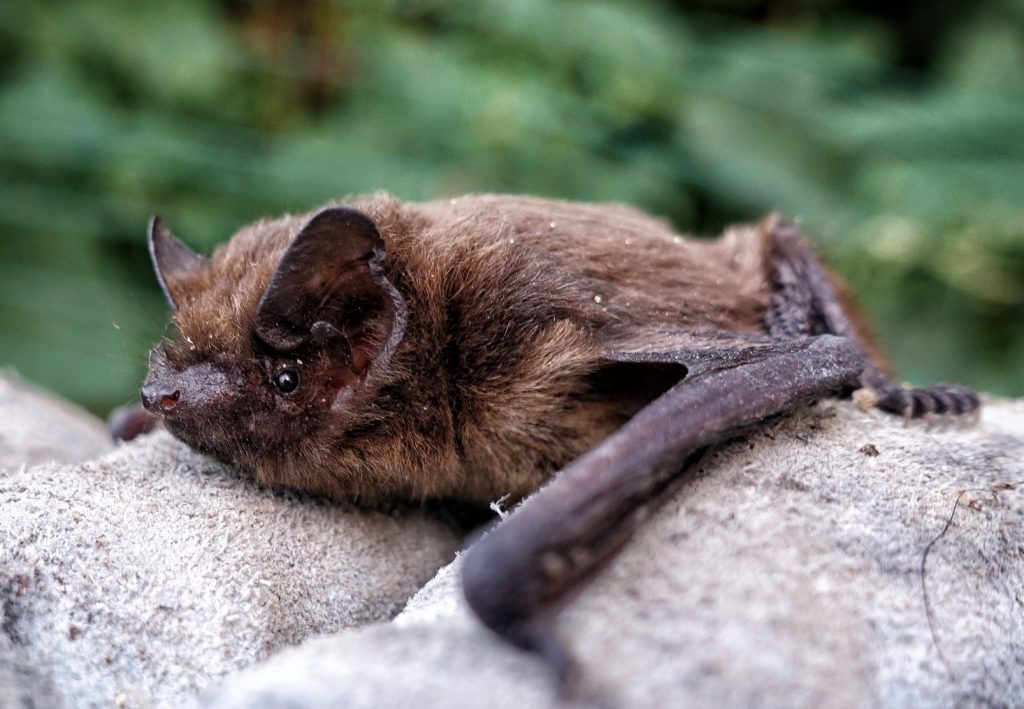
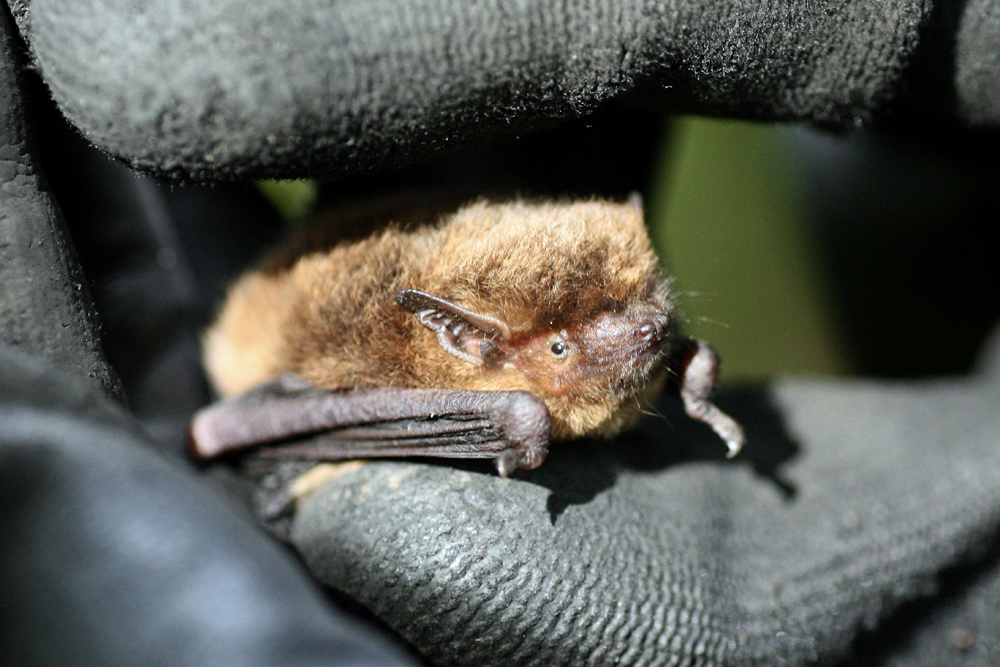
ID notes: All three species look very similar, with dark brown fur, a paler underside, and a darker mask-like pattern around the face. Nathusius’s pipistrelles are rarer, and slightly more easy to tell apart due to their lighter underside, larger body size, and furrier tail.
Size: 3.5-4.5cm in length (Nathusius’: 4.6-5.5cm)
Wingspan: 20-23cm (Nathusius’: 22-25cm)
Great and Lesser Horseshoe Bats
Latin names: Rhinolophus ferrumequinum and R. hipposideros
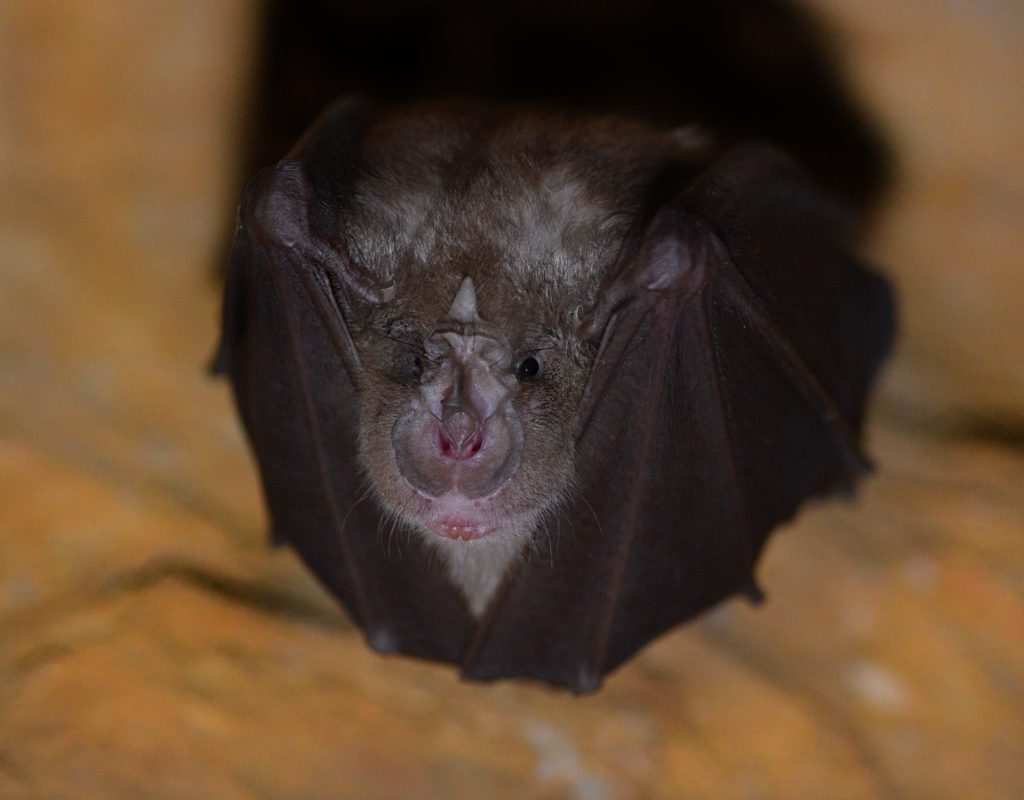
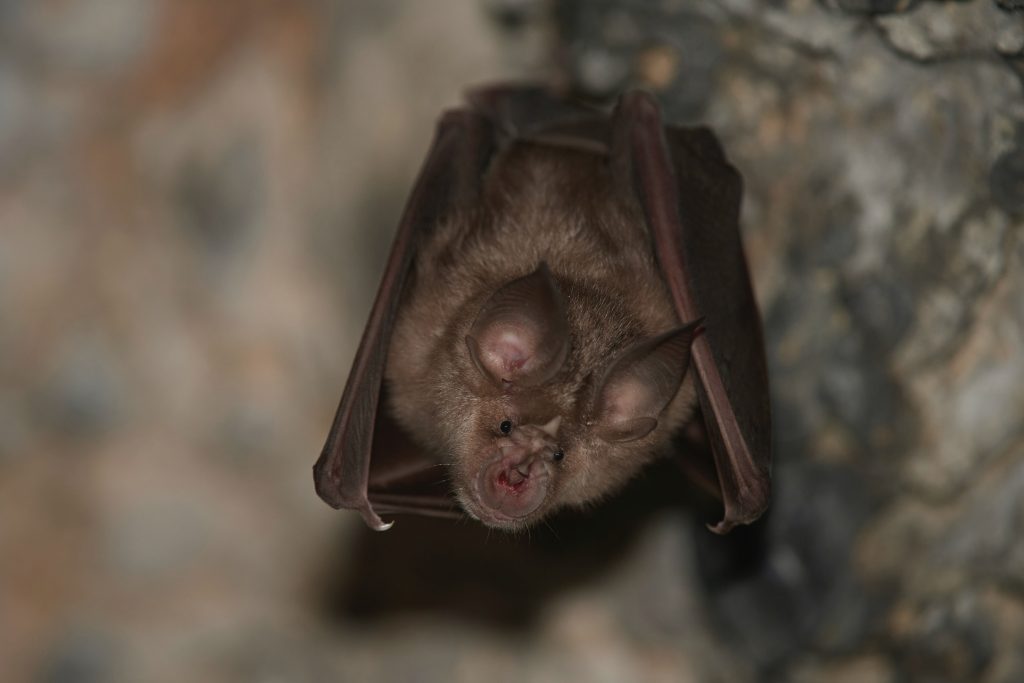
ID notes: Both these species have a fleshy nose shaped like a horseshoe. The lesser horseshoe is much smaller, with greyish-brown fur on its back and a white underside, while the greater horseshoe is larger and has more of a reddish-brown colouration on its back and a cream underside.
Size: Lesser: 3.5-45cm in length, Greater: 5.7-7cm in length
Wingspan: Lesser: 20-25cm, Greater: 35-40cm
Whiskered Bat:
Latin name: Myotis mystacinus
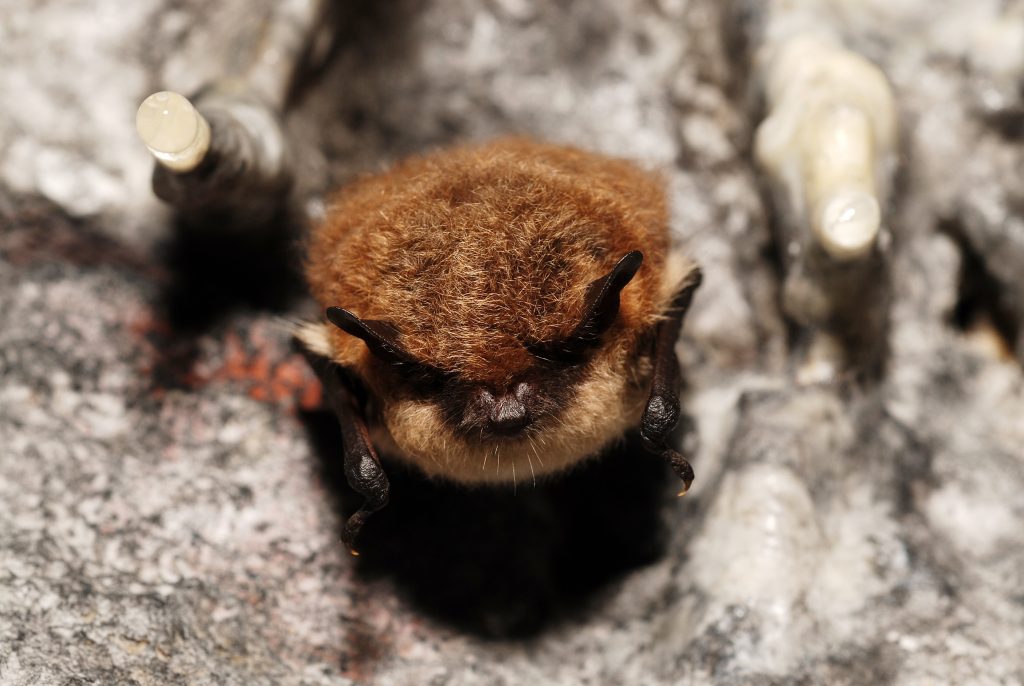
ID notes: The whiskered bat is quite difficult to distinguish as they are visually similar to Brandt’s bats. They have brown or dark grey fur with gold tips, and a lighter grey underside. They have a concave posterior edge to their tragus, the piece of skin of the inner ear in front of the ear canal, whereas Brandt’s bats have a convex posterior edge.
Size: 3.5-4.8cm
Wingspan: 21-24cm
Daubenton’s Bat
Latin name: Myotis daubentoniid
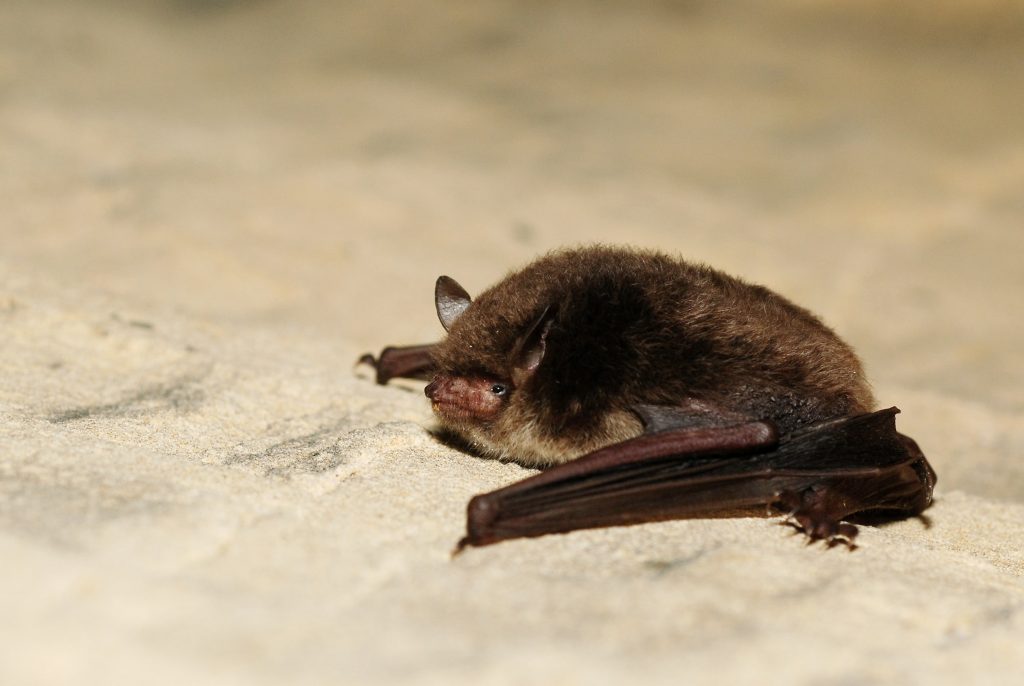
ID notes: This bat has brown fur, a paler underside that appears silvery-grey, and a pink face. This species is most likely seen around water as they forage for small flies above and on the water’s surface.
Size: 4.5-5.5cm
Wingspan: 24-27cm
Brown and Grey Long-eared Bats
Latin name: Plecotus auratus and P. austriacus
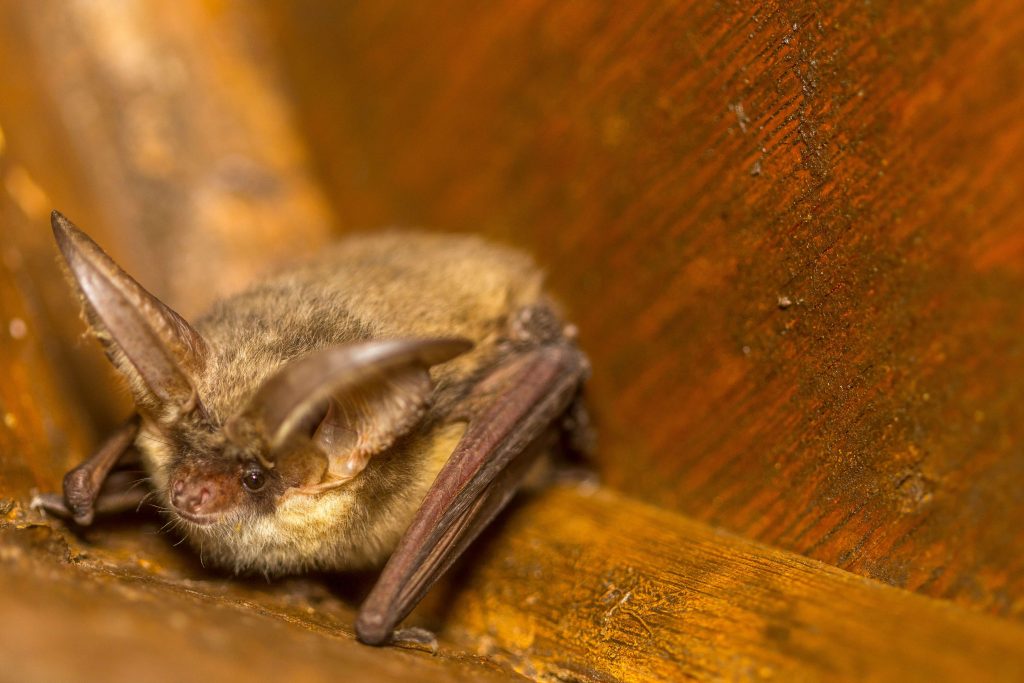
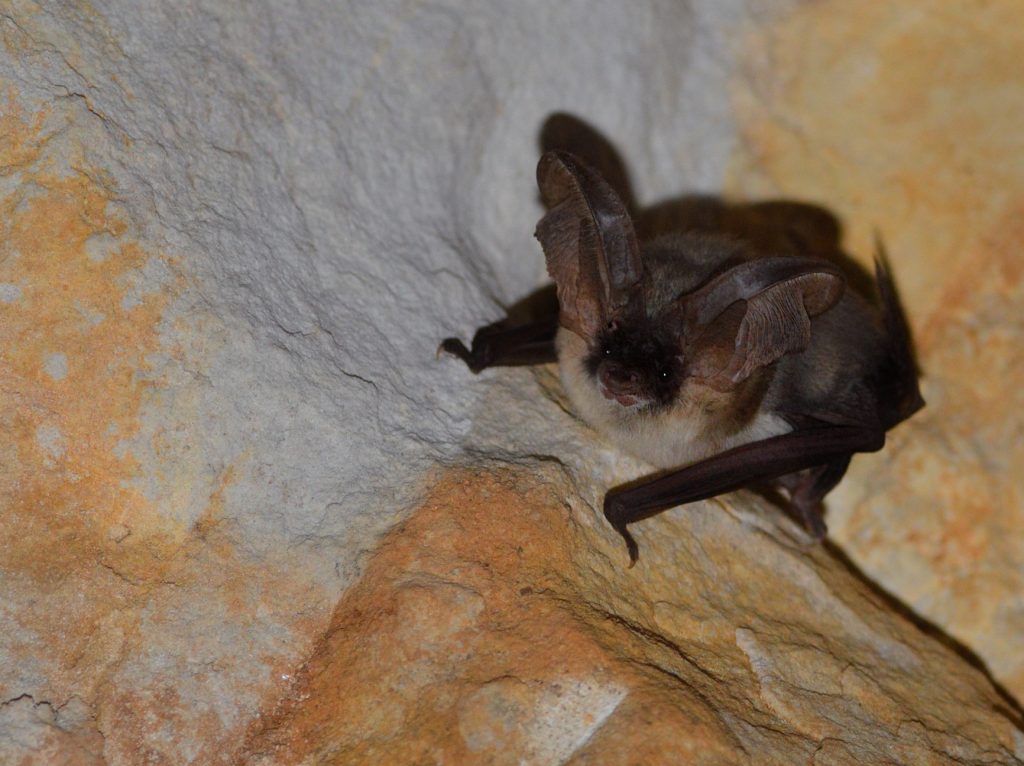
ID notes: These bats, as their names suggest, have very long, large ears which can be almost the same length as their bodies. These species look very similar, with greyish-brown fur, although the grey long-eared bat has a darker face.
Size: Brown: 3.7-5.2 cm, Grey: 4.1-5.8cm
Wingspan: Brown: 20-30cm, Grey: 25-30cm
Natterer’s Bat
Latin name: Myotis nattereri
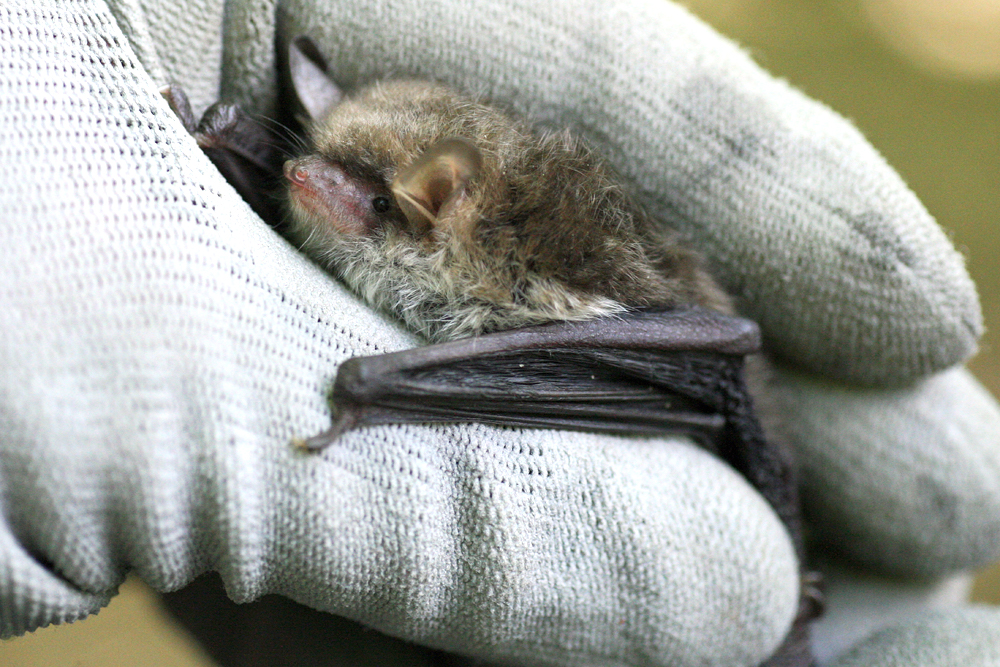
ID notes: The Natterer’s bat has a bare, pink face and light brown and grey fur on its back, with a paler underside. Its ears are quite long, and it has bristles along its tail membrane.
Size: 4-5cm
Wingspan: 24.5-30cm
Bechstein’s Bat
Latin name: Myotis Bechsteinii
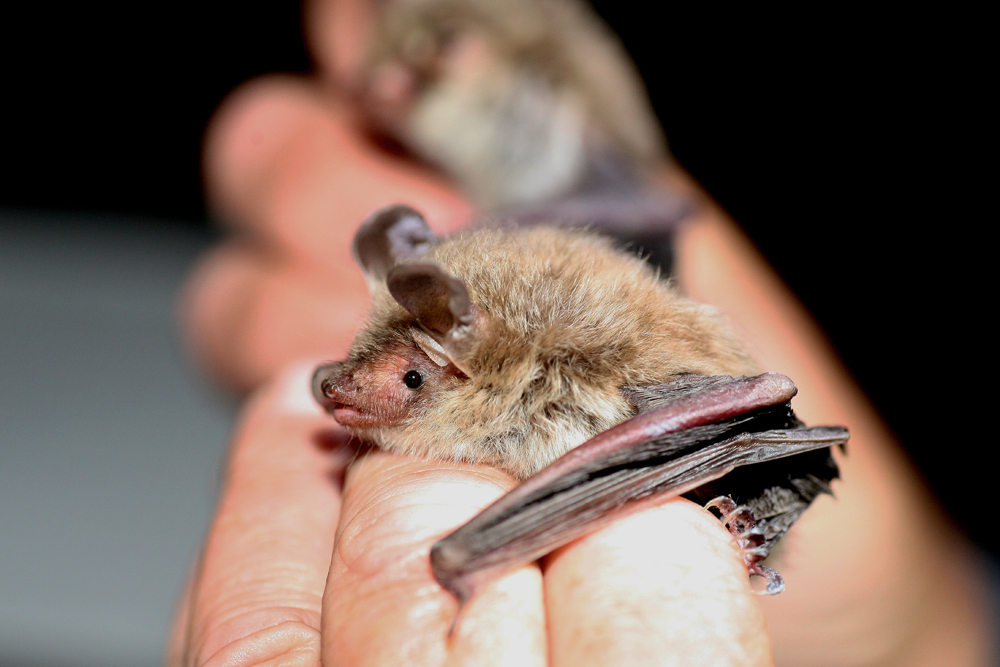
ID notes: The Bechstein’s bat has long ears which, unlike the barbastelle’s, do not meet at the forehead. Their fur is reddish-brown with a paler, grey underside, and a pink face.
Size: 4.3-5.3cm
Wingspan: 25-30cm
All bat species are European protected species, therefore they and their breeding and resting sites are fully protected by the law. It is important to note that a licence is required for capturing and handling bats, as well as for any activity that may disturb a bat roost, including photography.






